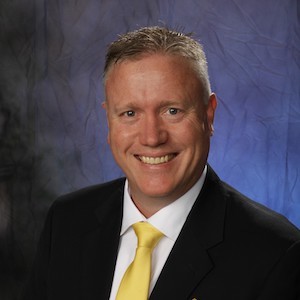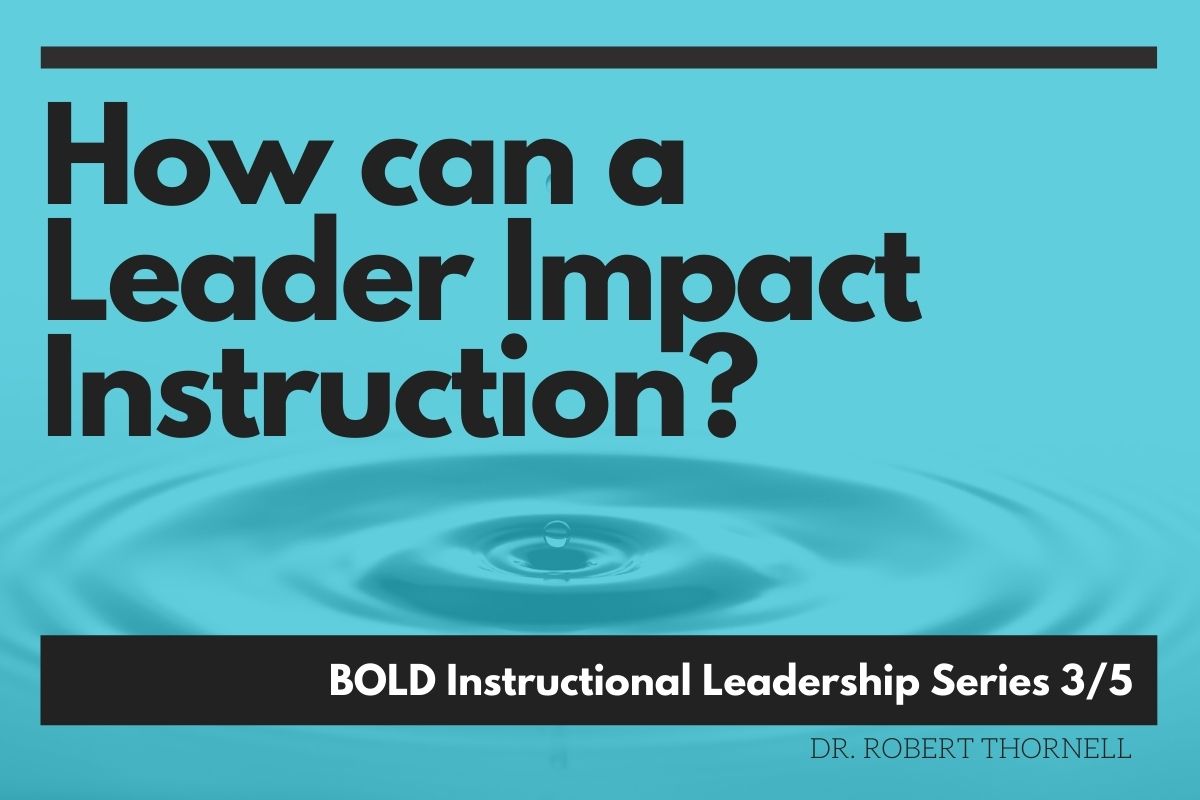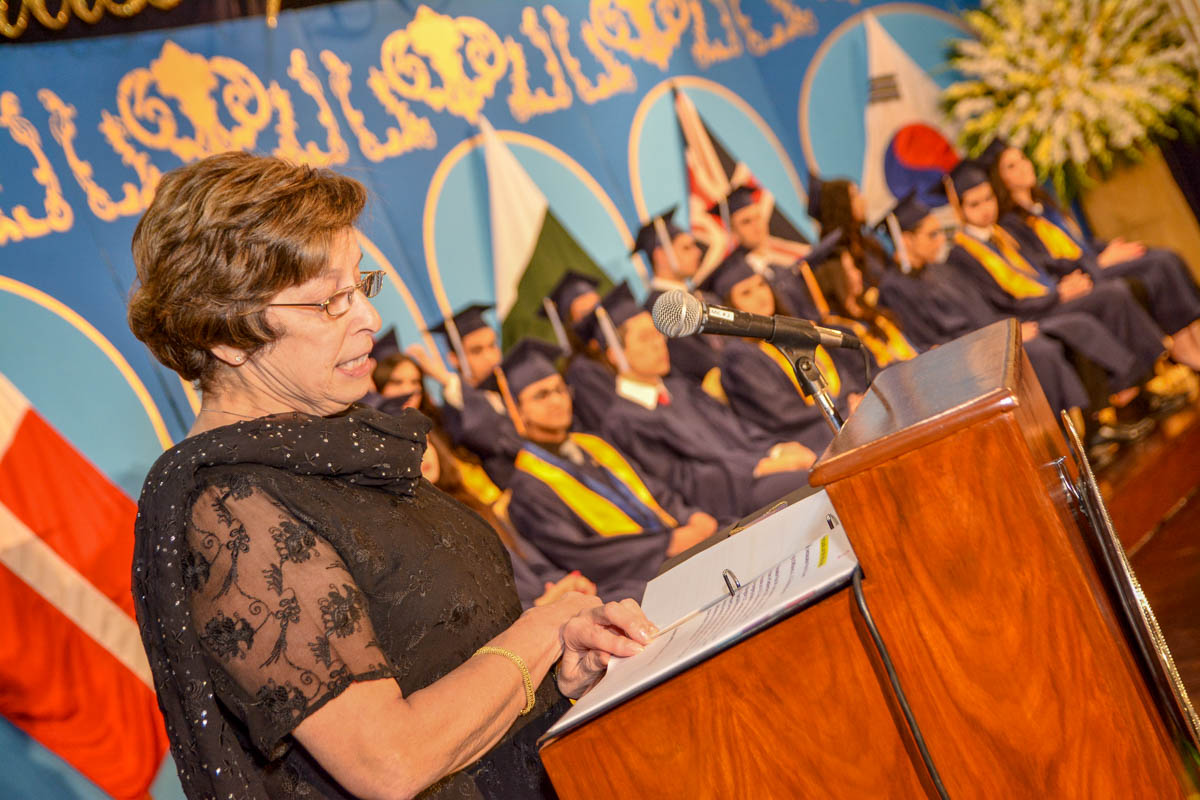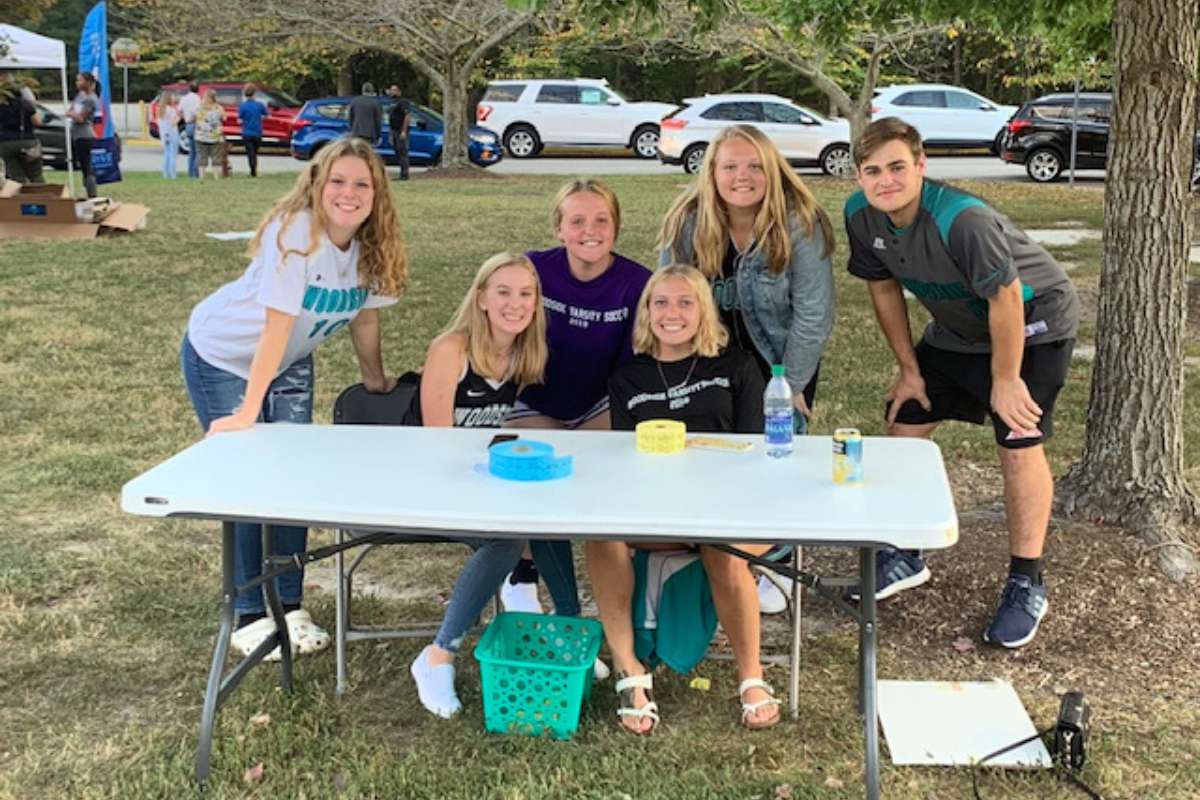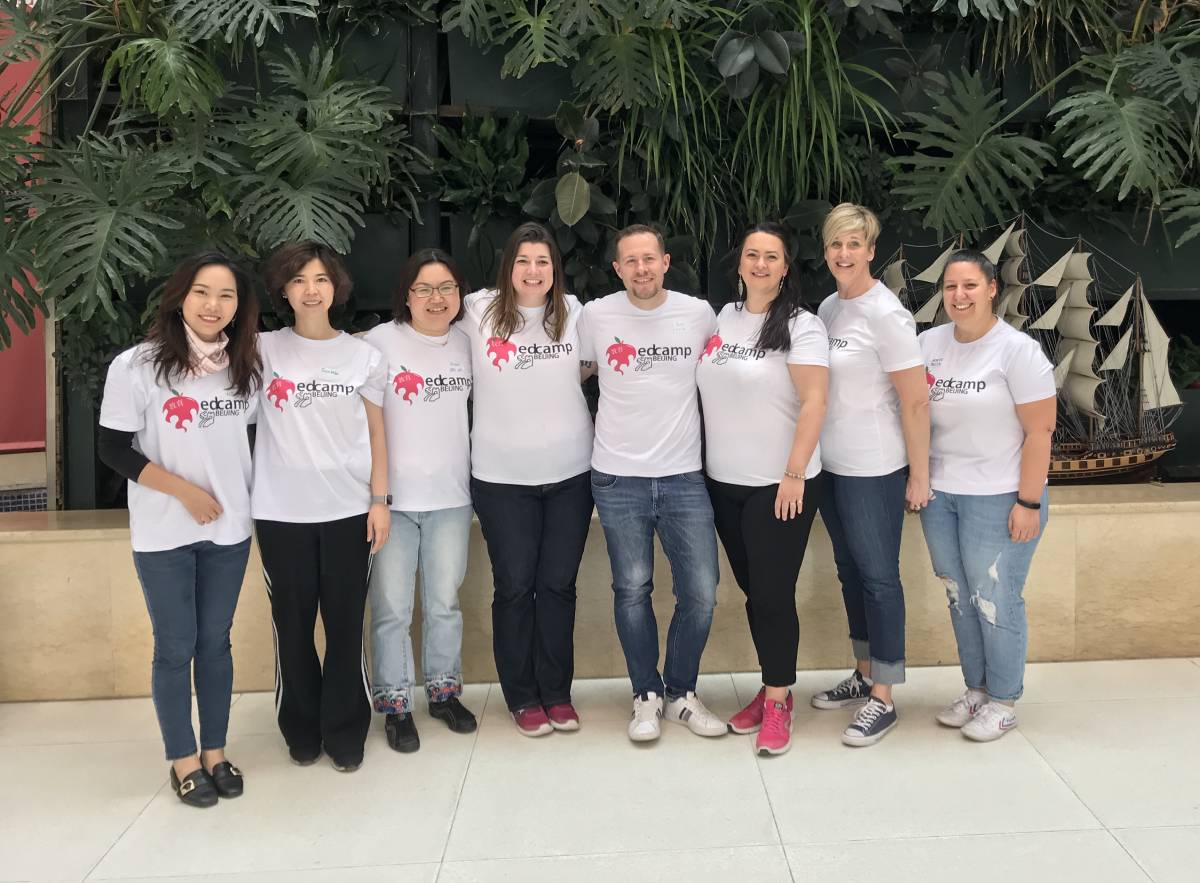How can an Instruction Leader Impact the Curriculum?
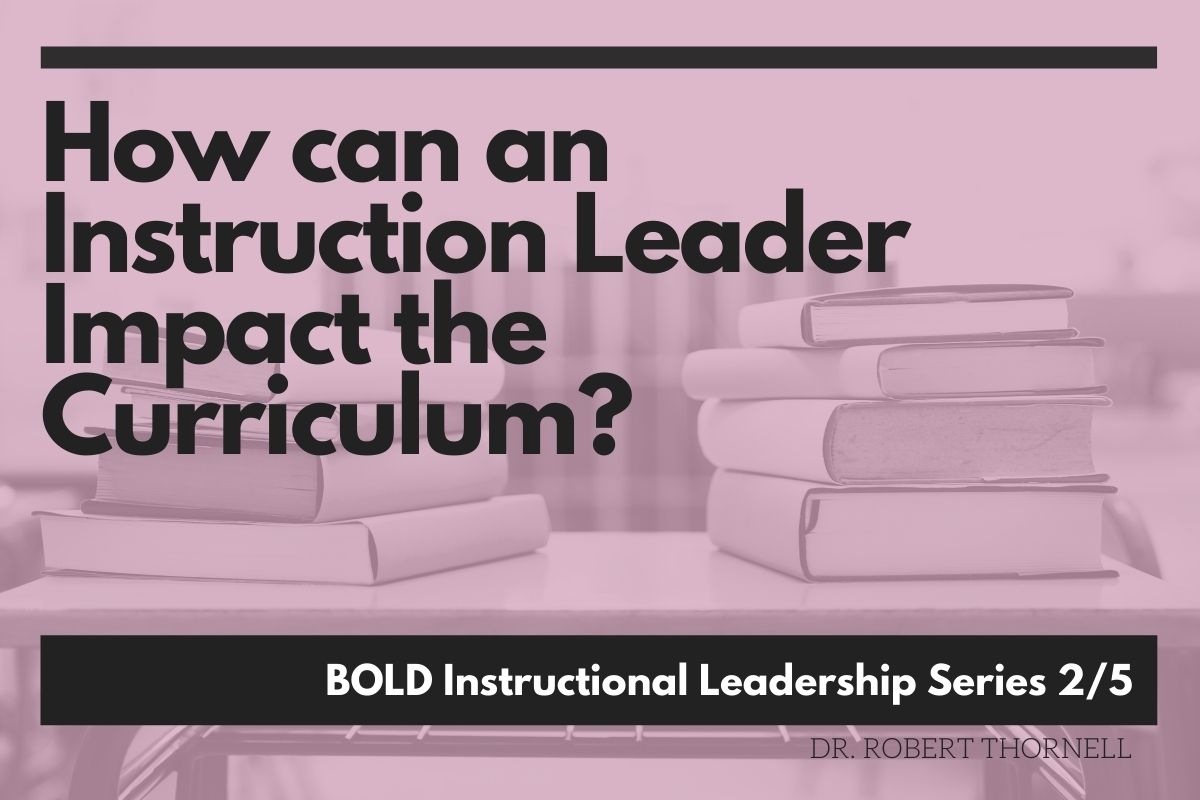
The role of a school leader is perpetually changing by the week, day, or even minutes. The ebb and flow of the job can be stressful and demanding, so much so that many principals find it difficult to focus on being an instructional leader even when they want to. It is relatively easy for any principal to fill each day with the countless number of questions or distractions that come his or her way. However, it is those same distractions that can keep a principal from meeting perhaps the single most important facet of their job: Ensuring Students Learn. In the second part of our five-part series “Bold Instructional Leadership,” I will focus specifically on things school leaders can do to have a positive impact on student learning before the students ever step foot into the classroom.
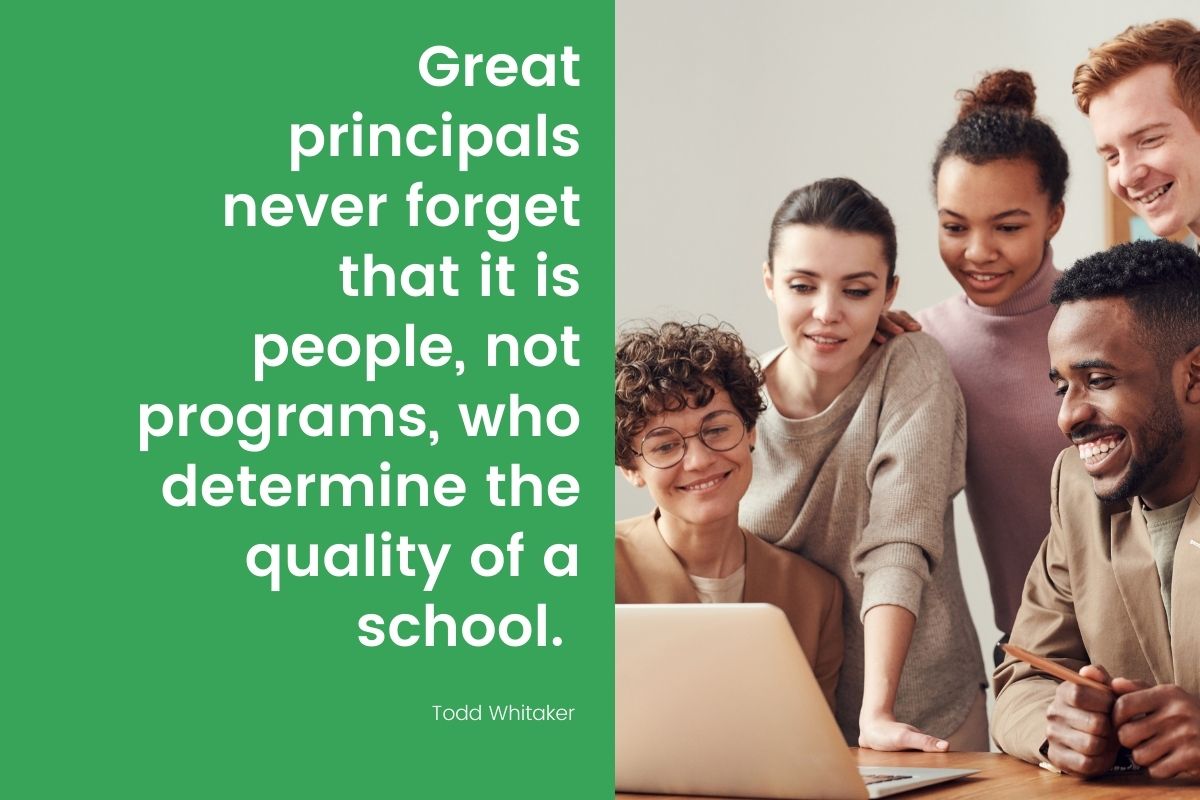
In a recent publication by The Education Hub, they noted “Instructional leadership is leadership that supports the development of teaching and learning.” (Le Fevre, 2021). While even a general review of the literature regarding effective schools tends to center on instructional leadership as the key to success, the nuts and bolts of training campus leaders can be either lacking, inconsistent, or difficult to implement. The fact is we must acknowledge every situation and every school is different and what works as one place, for one principal, may not be as effective in another school. It is this elusive “scaling up,” as I call it, that can be frustrating for school leaders as they search for the magic bullet of success by replicating successful practices on their own campus. Others use this as a crutch or excuse by saying things such as, “that won’t work in my school, or with my kids.” Those statements may be completely true, but a bold instructional leader has both the knowledge and the confidence to review/design effective practices and adjust them to meet the needs of their students and staff. Some might even call it formative instructional leadership by knowing where the campus is and what it needs next to improve instruction for all students.
Peter DeWitt’s highly successful book, Instructional Leadership: Creating Practice Out of Theory, acknowledges the dilemma of moving theories regarding instructional leadership into practice (DeWitt, 2020, p. 17). It seems that while instructional leadership is the most commonly researched form of school leadership, there does not appear to be a great deal focusing on specific ways to put it into practice (DeWitt, 2020, p. 16). While this article and subsequent on-line learning content’s scope does not exhaust all efforts on instructional leadership, it will provide several ideas that can be easily adopted and adjusted to meet the needs of school leaders.
Equality, Equity, and Connectivity of the Curriculum:
A Bold Instructional Leader, first and foremost, must have a moral compass that leads hi orher campus to a place where learning for ALL students is valued. To me, this begins and ends with Equality, Equity, and Connectivity within the framework of a guaranteed and viable curriculum. School leaders must ensure that every student has a pathway to access a high-quality curriculum and teachers that are equipped to support their learning at high levels. Robert Marzano, defined ‘guaranteed’ and ‘viable’ in the following ways:
Guaranteed means that all teachers are aware of the content they are responsible for teaching and are, in fact, teaching that content. This approach ensures that every student has the opportunity to learn the grade- and subject-appropriate content on which they will be assessed. Viable means that the amount of content is teachable in the time available for instruction. Essentially, a guaranteed and viable curriculum is one that can be taught in the time available AND is being taught in every classroom. (Magaña et al., 2011, p. 57)
Fenwick English extends the concept of a guaranteed and viable curriculum even further by using the standard of Equality, Equity, and Connectivity as part of any review of the curriculum. (English, 2010, pg 72) Part of the role of a Bold Instructional Leader includes making sure all students have access to the curriculum and that all teachers are teaching it. This is not to take away teacher autonomy to meet their students’ needs (we will discuss this more in part 3), but rather the leaders must develop certain safeguards to protect the integrity of the curriculum and the learning that goes on every day in the classroom. Many of those safeguards start well before the students arrive each day!
A Bold Instructional Leader shows they value education for all by committing to focusing time and resources to ensure all students experience a high-level curriculum. For example, and there are many, let’s focus on some decisions principals make that may not be perceived to impact the curriculum and instruction a student receives but in reality, they have a great deal of influence.
- The master schedule. Does your master schedule provide equity and access to a high-level curriculum for ALL students? Do all students, including marginalized groups, have access to advanced classes? What are the stated or unstated gatekeepers to such a curriculum?
- Are your best teachers with the students that need them most?
- Do you have intentional planning time created for teacher planning and learning?
- What are your expectations for professional learning communities?
- Are teachers expected to follow the same curriculum map or scope and sequence or may they pick and choose what to teach?
- Do you protect sacred instructional time in the classroom or are outside distractions, assemblies, and campus activities the norm?
While these are just a few questions for a campus leader to consider, and possibly change as needed, it should be noted that each of them deals directly with equality, equity, and connectedness. For example, should a student in one third grade class receive a different curriculum (either more or less rigorous) simply because of the random choice of which teacher he/she was assigned? Should only some students have access to honors or advanced classes? Jessica Rigby has developed what she considers three forms of logic behind instructional leadership and one of those is Social Justice Logic. This concept, in its simplest form, focuses on the experiences and even the inequitable outcomes of marginalized groups (Rigby, 2014, p. 624). While it is not likely or even favorable for every student to receive exactly the same, I would argue that a Bold Instructional Leader has a moral imperative to make sure ALL students have access and support to the highest quality curriculum possible.
Lesson Plans vs. Lesson Design?
One of my favorite questions to ask educators when learning about their build is simply, “What are the expectations for lesson planning?” The variety of answers varies greatly, but the responses are telling. Think for a moment and reflect on how you would answer that question on your own campus and how your teachers might respond as well. Do the answers align? The question, on the surface, may seem like a simple one, but I believe it has a great deal to do with the learning culture a principal provides for the campus. Some principals have strict expectations for lesson plans complete with fancy templates that require a variety of fancy educational terms such as learning targets, essential questions, standards, assessment, etc. all of which may be important to the actual lesson, but not always considered at the depth needed to really unpack what the teacher intends for his/her students to learn. Some campuses require weekly lesson plans that include these specific components and others take the approach of “just have them in case they ask” type philosophy. Another popular method of lesson planning is having each person from a particular team or grade level plan for one content area and then share the plans with their teammates. While this may be beneficial based on the expertise of the team members in a given subject area, I believe if we are transparent, it has more to do with convenience and efficiency than it does with effectiveness.
I find little to no research that claims that teachers turning in lesson plans to the principal has either a positive or negative impact on student learning. There is, however, tremendous amounts of research that will point to the idea that a principal that is active in the learning process at their campus through either feedback, facilitation, or participation in learning with their teachers can have a huge impact. While I have collected lesson plans in the past, I will admit they were rarely looked at and became more of a compliance process than true learning. I also found that teachers resented the process. My advice would be: If you are going to require lesson plans and prescribe their components, you should know why you are asking for them and what you plan to do with them to improve instruction and student outcomes

Another consideration and one that we will review further in the Bold Instructional Leader course, is the concept of curriculum mapping or unit planning. To make proper instructional decisions, a teacher must have a full understanding of the course/grade-level standards and an idea of how to teach them. Larry Ainsworth defines curriculum as “the high-quality delivery system for ensuring all students achieve the desired end- the attainment of their designated grade- or course-specific standards.” (Ainsworth, 2011, p. 7) To do that, principals and teachers must have a common understanding of what is to be taught and then, based on student needs, determine how they will teach and assess it.
Responsive Planning
As mentioned, there are countless ways to design lesson plan templates to help your teachers guide and plan for their instruction. In my opinion, keep it simple. Whilst curriculum documents may have numerous details and wording necessary to satisfy some district or state level expectations when it comes to the nuts and bolts of the classroom, teachers should focus on a few basic questions that meet the needs of their entire class. By expecting them to do so, you are enhancing the learning environment for students. I encourage you to try and match your expectations and/or lesson planning document with four easy steps:
- What am I going to teach? Teachers are going to take the curriculum and make this decision regardless, so it is important that they can articulate it and that it meets an ambitious level for their class. All students should have access to the grade level/course curriculum.
- How are the students going to be assessed? While the word assessment can sometimes be used as a bad word in education, as the instructional leader you must be bold enough to ask the question. The response can be formative, summative, or ongoing, but being accountable for learning means that we can clearly determine if the students learned what was intended.
- How will I teach this lesson? Once a teacher or group of teachers has determined what they are going to teach and how they are going to assess the learning, the next consideration should be to develop the instructional plan. This includes considerations for activities, tasks, and formative checks along the way. Will they work independently or in groups? Etc.
- Use Data To Respond to Student Needs. While the first three steps are probably fairly common in lesson planning and certainly nothing new to many veteran educators, the fourth step, using the data, may be a new wrinkle. Schools are data-rich and often look at data in a variety of ways, however, if we are going to use it to actually change practices and impact student learning, we must be responsive to the needs of our class. As a bold instructional leader, can you ask teachers to specifically name BOTH the students that they anticipate struggling with the lesson and those that they believe already will know the material? Part of equity within the curriculum is not making changes to the curriculum, but instead adjusting instruction to respond to student needs.
Professional Learning Communities – What’s My Role?
For some campus leaders, their idea of Professional Learning Communities (PLCs) is to set them up and get out of the way. In some rare cases that may be just the case. However, the most effective schools have bold instructional leaders that share and expect certain activities when it comes to PLCs. The amount of time and money spent studying and training staff on PLC protocols and norms in the last 25 years is astronomical, yet at many schools, I visit, they still are not being implemented effectively.
Here are a few things to consider from a principal’s perspective that would help:
- Time. Yes, time. Few would argue that effective PLCs can improve learning and teaching on campus, but often teachers are not given the appropriate time to explore or utilize them. Principals must be creative in their planning and their expectations to make sure teachers have enough time to work in PLCs and to meet with one another about lesson design and students.
- What are your expectations for PLCs? No matter if a team meets daily, weekly, or monthly, determining the agenda and sticking to it is very important. Have you done enough capacity building to allow teachers to lead themselves? A bold instructional leader must ensure that PLCs are happening and focused on learning and teaching. You might consider a team learning log for notes of the discussions.
- Push-In. In a healthy learning culture, PLCs are not private or exclusive and they should never become so. While teachers need autonomy and time to work, a bold instructional leader should create time to participate as a PLC member and learn with teachers. This can be a tricky role to navigate for some but it is also an effective way to build credibility as a leader.
- Systems or Cycles. No one, principal or teachers should be surprised or wonder what is on the agenda. Educators over the years have gotten creative with activities and protocols in PLCs and there is nothing wrong with variety, however, I encourage you to do so within a system or cycle. For example, if your expectation in the PLC is to review the upcoming curriculum, does that happen at the beginning of each unit? Does it happen in some grade levels/courses and not others?
Remember, PLC time is sacred, but that does not mean teachers should get to do whatever they want during that time. The balance between autonomy, innovation, and expectations is a constant seesaw the leader must navigate.
Lesson Share
Speaking of systems or cycles, one specific activity for a PLC that I would like to highlight before closing is the concept of Lesson Share (Stigler & Hiebert, 2009, p.109). While the description below can be adjusted and morphed to meet different settings, the concept is simple. In the book, The Teaching Gap, the authors take a look at the best ideas from educators all over the world and share them as possible ways to improve teaching and learning. As I read this book several years ago, the concept of Lesson Share stood out to me and I tried it on my campus with great success. While we go into much deeper detail in the Bold Instructional Leadership course regarding how to effectively implement a Lesson Share, the concept is somewhat self-explanatory. A teacher or group of teachers in a PLC setting share their lesson design with others and receive feedback BEFORE teaching the lesson. As part of the lesson cycle, teachers then implement the lesson while other members of the PLC watch the lesson and again offer feedback. The final step is for the PLC to meet again and review both the feedback and the student work to determine if the learning goals were met by the students. I would estimate this process to take two to three weeks with a minimum of two PLCs plus the time to observe the classroom, but the learning from all involved is limitless. As the bold instructional leader, your participation is powerful as well.
Takeaways
As you will read in article 3 of the series, monitoring the implementation and teaching on campus is imperative for an instructional leader. However, I hope you have also reflected on your role as an instructional leader when it comes to the curriculum and how by being proactive you can influence teacher practices and students’ learning experiences before they step into the classroom. The expectations you set, and the decisions you make about things such as the master schedule, teacher/student assignments, and resource allocation all impact the curriculum and must be intentional for your school.
Want to Learn More?
Coming soon in part three of our Bold Instructional Leadership series, we will take a look at ways an instructional leader can impact the learning and teaching on the campus by focusing on what happens in the classroom. We also hope you will consider registering for the upcoming on-line course Bold Instructional Leadership. In this asynchronous on-line course you will gain valuable insight and resources on how to enhance your instructional leadership.
Intentionally Bold: Instructional Leadership Course
Register for the course by clicking here to learn more and register!
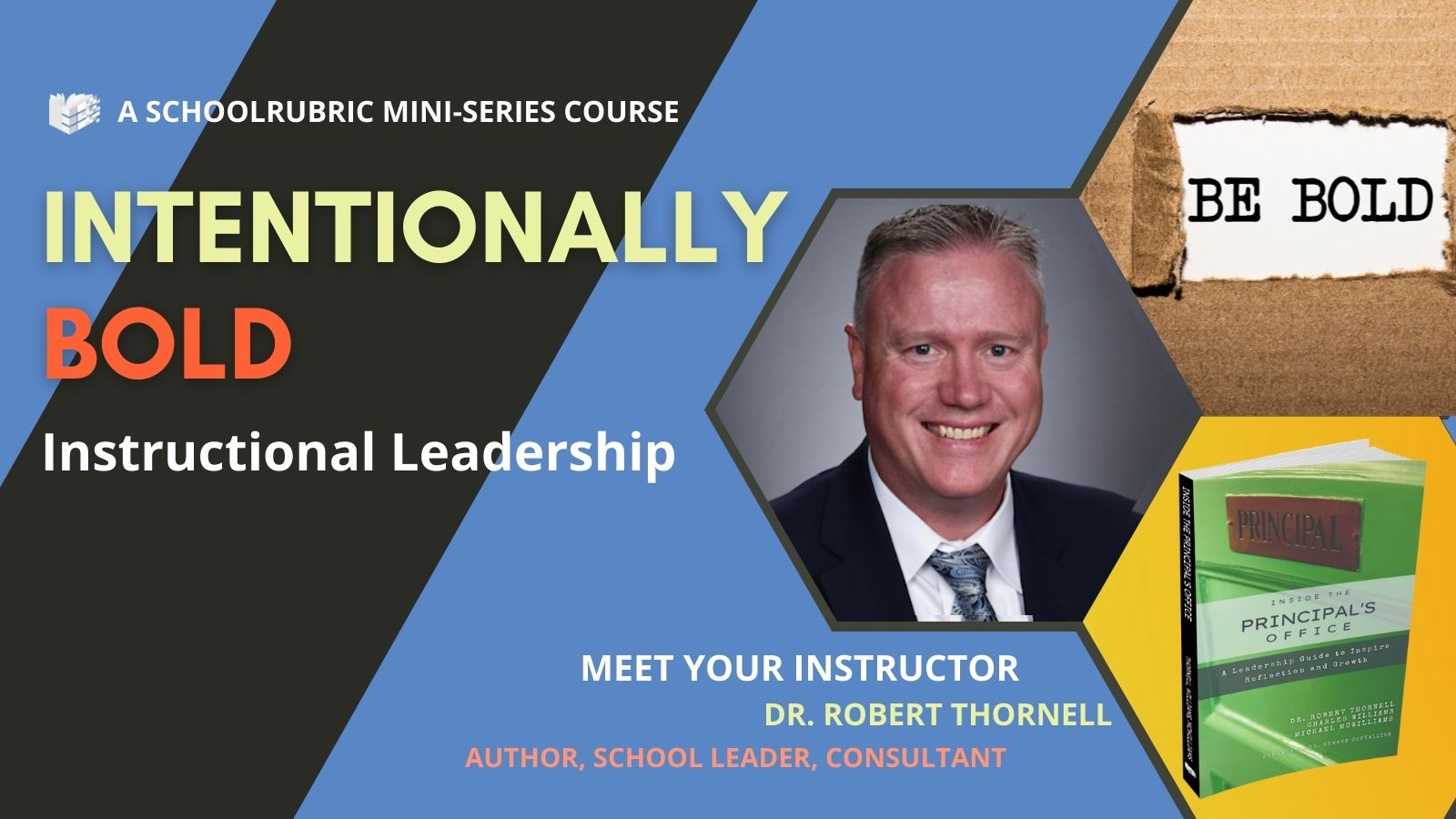
Ainsworth, L. (2011). Rigorous Curriculum Design: How to Create Curricular Units of Study that Align Standards, Instruction, and Assessment. Lead Learn Press.
DeWitt, P. M. (2020). Instructional Leadership: Creating Practice Out of Theory. SAGE Publications.
DuFour, R., DuFour, R., Many, T. W., Eaker, R., & Mattos, M. (2016). Learning by Doing: A Handbook for Professional Learning Communities at Work. Solution Tree Press.
Le Fevre, D. (2021, March 10). Instructional leadership and why it matters – THE EDUCATION HUB. The Education Hub. Retrieved March 24, 2022, from https://theeducationhub.org.nz/instructional-leadership-and-why-it-matters/
Magaña, S., Hoegh, J. K., Pleis, F., Warrick, P., Livingston, P., Simms, J. A., Heflebower, T., Marzano, R. J., & Livingston, D. (2011). A Handbook for High Reliability Schools: The Next Step in School Reform. Marzano Research Laboratory.
Rigby, J. (2014). Three Logics of Instructional Leadership. Education Administration Quarterly, 50(4), 610-644. https://journals.sagepub.com/doi/abs/10.1177/0013161X13509379
Stigler, J. W., & Hiebert, J. (2009). The Teaching Gap: Best Ideas from the World’s Teachers for Improving Education in the Classroom. Free Press.
Whitaker, T. (2011). What Great Principals Do Differently: Eighteen Things that Matter Most. Routledge.

